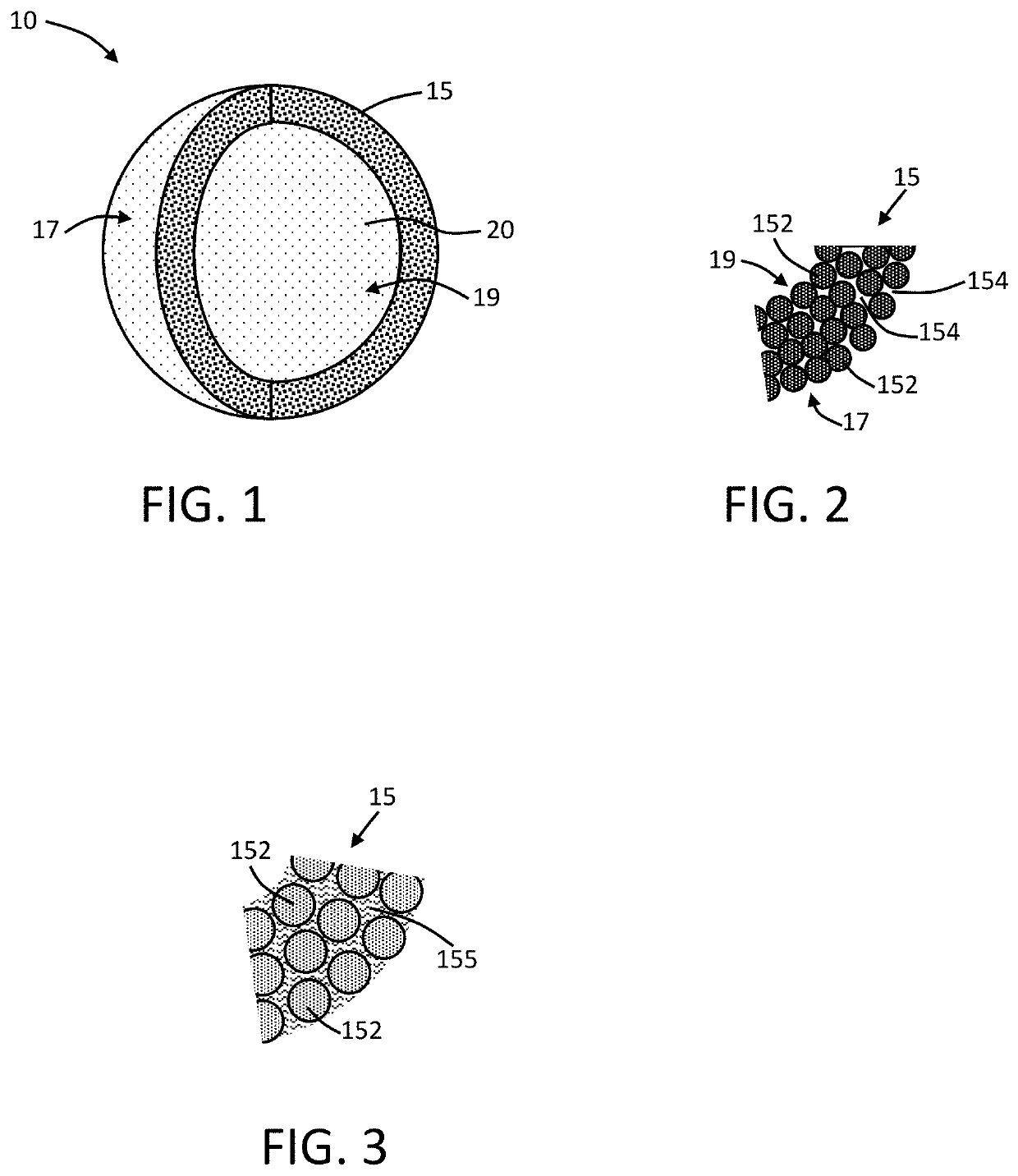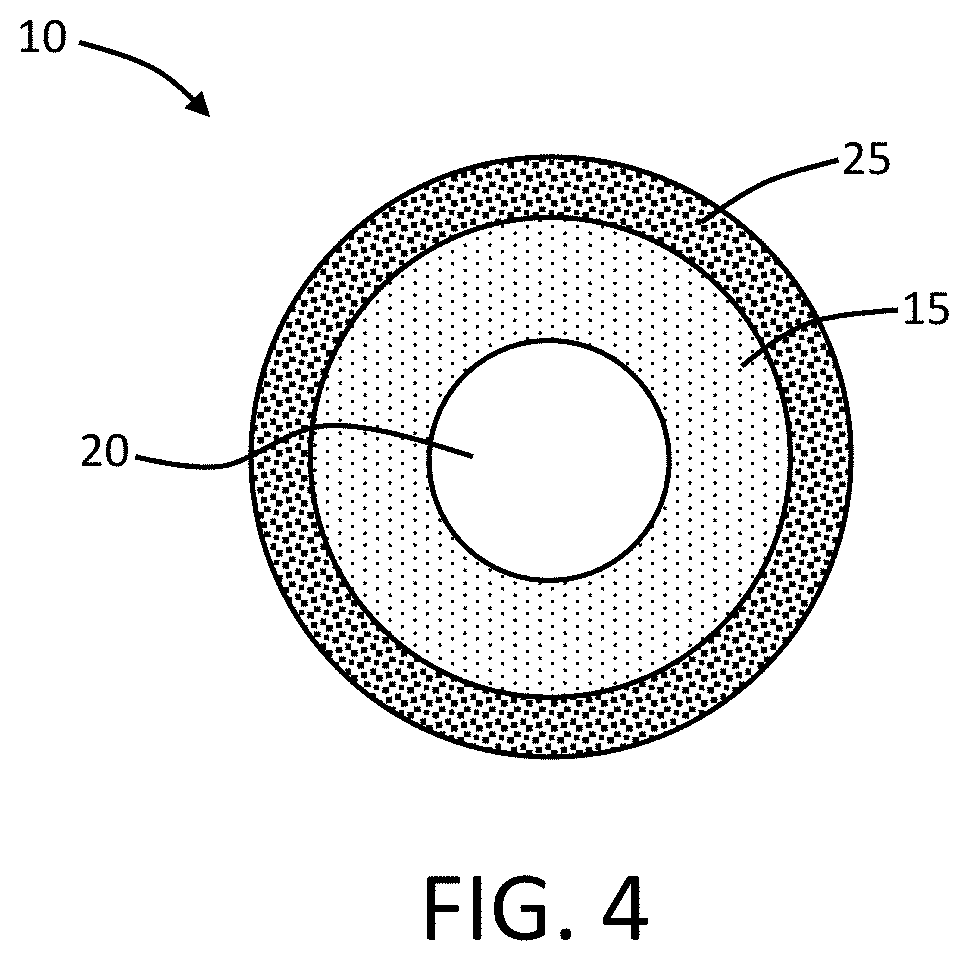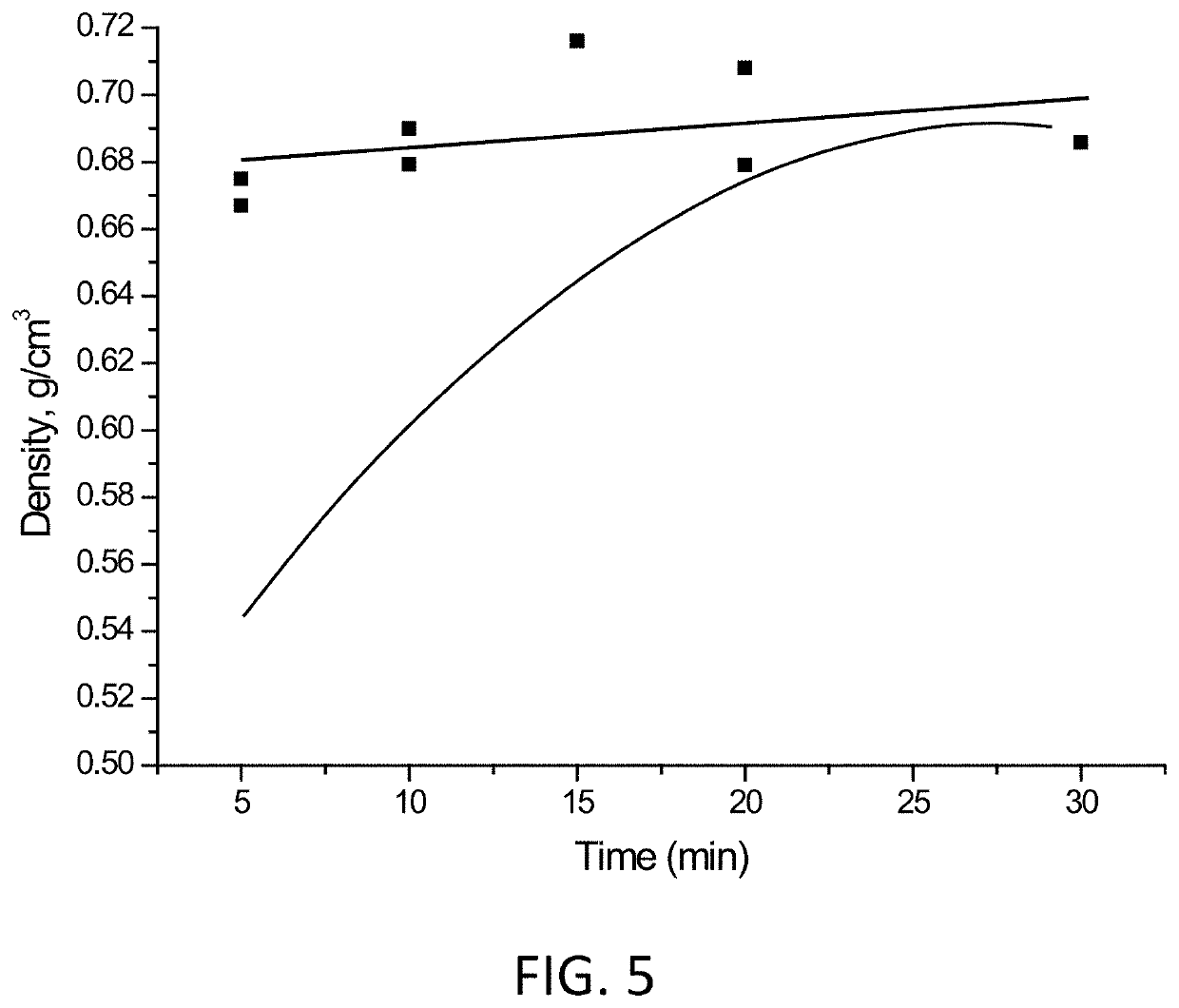Hollow core granules, products incorporating the granules, and methods of preparing the granules
- Summary
- Abstract
- Description
- Claims
- Application Information
AI Technical Summary
Benefits of technology
Problems solved by technology
Method used
Image
Examples
example 1
carbonate+PEG
[0263]Granules were prepared using 5 grams of PEG 8000 (1.2 mm-1.6 mm nominal size) as binder particles or crystals, which was loaded in the fluidized bed drier with 250 grams of sodium bicarbonate (0.100 mm-0.400 mm nominal size). The fluidized bed dryer was run at 65° C. to prepare five batches with different residence times at maximum temperature (5 min, 10 min, 15 min, 20 min, or 30 min). Respective batches were cooled to 30° C. prior to discharging the formed granules. An image of one of the hollow core granules after being cut is shown in FIG. 24.
[0264]Bulk density of the granules as a function of the processing time in the fluidized bed drier was found to substantially increase with increased residence time, and the measured values are shown in FIG. 5. Residence time was also found to be a factor in the total amount of the sodium bicarbonate particles present in the formed granules with the total content increasing with processing time but appearing to reach a pl...
example 2
+PEG
[0266]Granules were prepared using 5 grams of PEG 8000 (1.2 mm-1.6 mm nominal size) as binder particles or crystals, which was loaded in the fluidized bed drier with 250 grams of bentonite (0.100 mm-0.400 mm nominal size). The fluidized bed dryer was run at 65° C. to prepare two batches with different residence times at maximum temperature (15 min and 30 min). Respective batches were cooled to 30° C. prior to discharging the formed granules. An image of one of the hollow core granules after being cut is shown in FIG. 25.
[0267]Bulk density of the granules as a function of the processing time in the fluidized bed drier was found to substantially decrease with increased residence time, and the measured values are shown in FIG. 11. Granule strength was found to be less than the measured strength of the granules of Example 1 (3.6 N for the present granules versus 15 N for the granules of Example 1). The shell thickness of the bentonite hollow core granules was approximately equal to ...
example 3
[0268]Granules were prepared using 5 grams of PEG 8000 (1.2 mm-1.6 mm nominal size) as binder particles or crystals, which was loaded in the fluidized bed drier with 235 grams of bentonite (0.100 mm-0.400 mm nominal size) and 235 grams of sodium bicarbonate (0.100 mm-0.400 mm nominal size). The fluidized bed dryer was run at 65° C. for 15 minutes prior to cooling to 30° C. before discharging the formed granules. The resulting granules had an average granule size that was similar to the bentonite granules of Example 2. The density of the resulting granules was approximately midway between the density of the sodium bicarbonate granules of Example 1 and the bentonite granules of Example 2. Strength of the granules was similar to the strength of the bentonite granules of Example 2. Total granule properties are shown in the tables of FIG. 17 and FIG. 18. An image of a plurality of the hollow core granules is shown in FIG. 26.
PUM
| Property | Measurement | Unit |
|---|---|---|
| Fraction | aaaaa | aaaaa |
| Fraction | aaaaa | aaaaa |
| Fraction | aaaaa | aaaaa |
Abstract
Description
Claims
Application Information
 Login to View More
Login to View More - R&D
- Intellectual Property
- Life Sciences
- Materials
- Tech Scout
- Unparalleled Data Quality
- Higher Quality Content
- 60% Fewer Hallucinations
Browse by: Latest US Patents, China's latest patents, Technical Efficacy Thesaurus, Application Domain, Technology Topic, Popular Technical Reports.
© 2025 PatSnap. All rights reserved.Legal|Privacy policy|Modern Slavery Act Transparency Statement|Sitemap|About US| Contact US: help@patsnap.com



